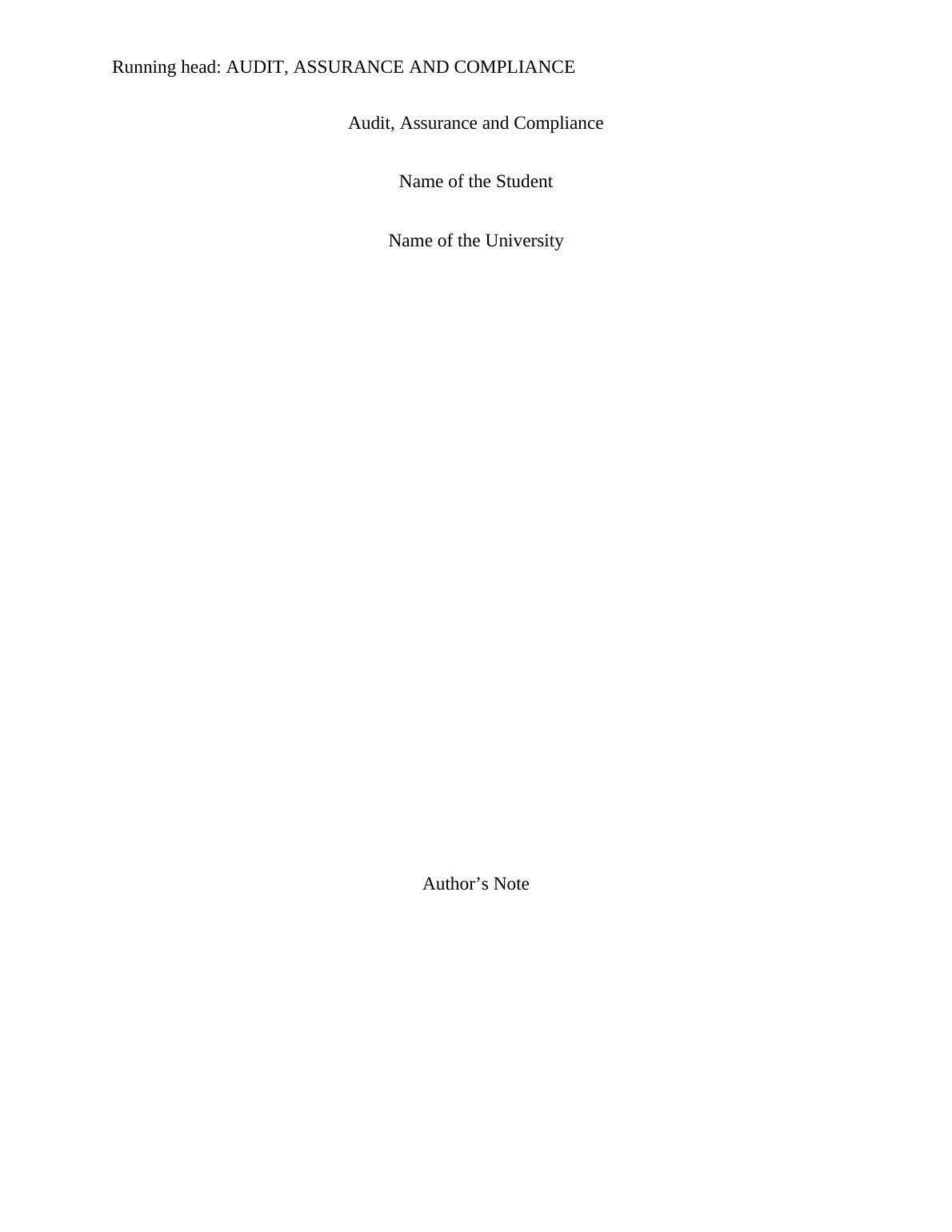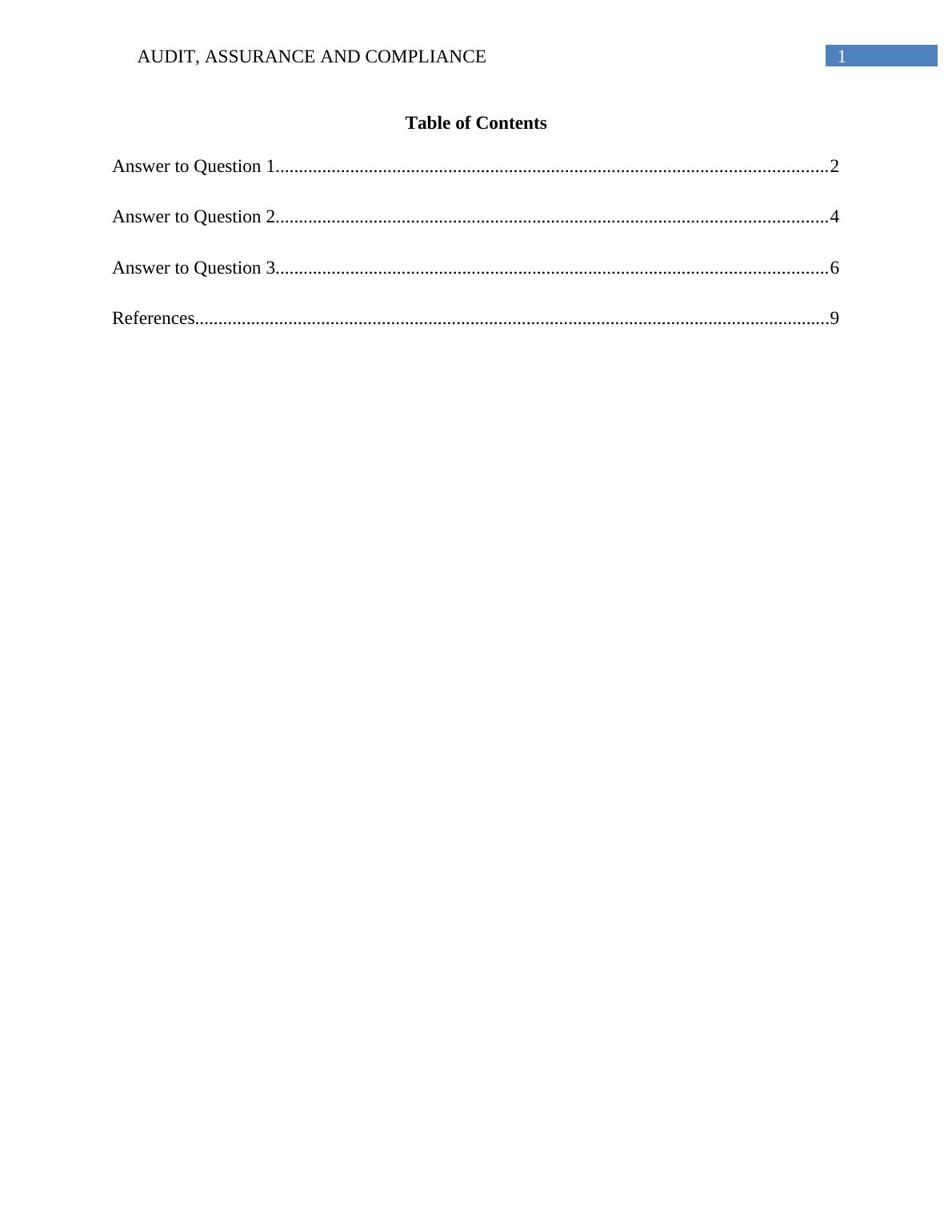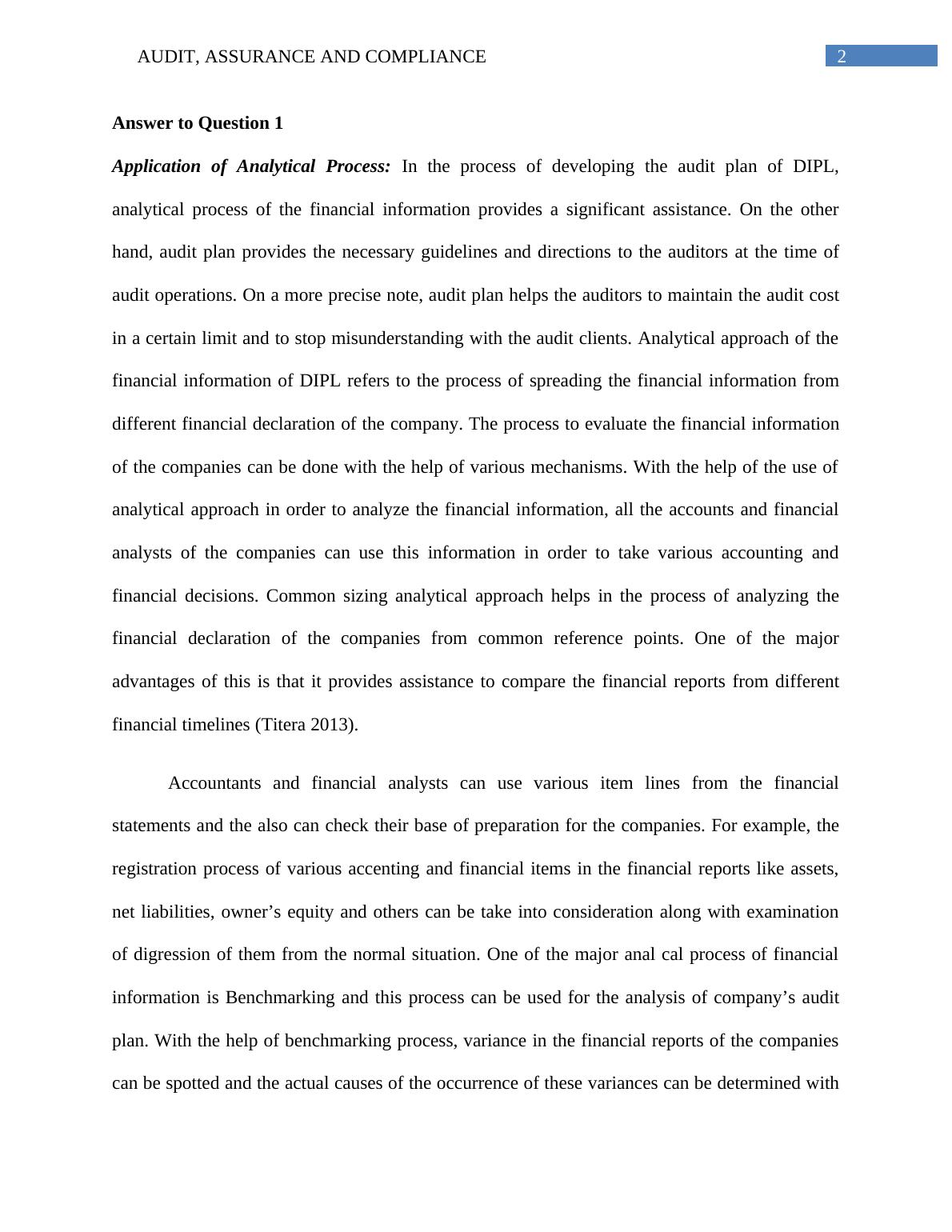HI6026 - Audit, Assurance and Compliance | Case Study
Added on 2020-03-07
11 Pages2559 Words56 Views
Running head: AUDIT, ASSURANCE AND COMPLIANCEAudit, Assurance and ComplianceName of the StudentName of the UniversityAuthor’s Note

1AUDIT, ASSURANCE AND COMPLIANCETable of ContentsAnswer to Question 1......................................................................................................................2Answer to Question 2......................................................................................................................4Answer to Question 3......................................................................................................................6References........................................................................................................................................9

2AUDIT, ASSURANCE AND COMPLIANCEAnswer to Question 1Application of Analytical Process: In the process of developing the audit plan of DIPL,analytical process of the financial information provides a significant assistance. On the otherhand, audit plan provides the necessary guidelines and directions to the auditors at the time ofaudit operations. On a more precise note, audit plan helps the auditors to maintain the audit costin a certain limit and to stop misunderstanding with the audit clients. Analytical approach of thefinancial information of DIPL refers to the process of spreading the financial information fromdifferent financial declaration of the company. The process to evaluate the financial informationof the companies can be done with the help of various mechanisms. With the help of the use ofanalytical approach in order to analyze the financial information, all the accounts and financialanalysts of the companies can use this information in order to take various accounting andfinancial decisions. Common sizing analytical approach helps in the process of analyzing thefinancial declaration of the companies from common reference points. One of the majoradvantages of this is that it provides assistance to compare the financial reports from differentfinancial timelines (Titera 2013). Accountants and financial analysts can use various item lines from the financialstatements and the also can check their base of preparation for the companies. For example, theregistration process of various accenting and financial items in the financial reports like assets,net liabilities, owner’s equity and others can be take into consideration along with examinationof digression of them from the normal situation. One of the major anal cal process of financialinformation is Benchmarking and this process can be used for the analysis of company’s auditplan. With the help of benchmarking process, variance in the financial reports of the companiescan be spotted and the actual causes of the occurrence of these variances can be determined with

3AUDIT, ASSURANCE AND COMPLIANCEthe determination of root cause of these variances. Apart from the benchmarking process, RatioAnalysis is considered as a major analytical process of financial information of the companies.Ration analysis is especially helpful in the comparison of the financial reports of two or manycompanies in order to develop the audit plan (Jans et al. 2014).Explanation: The adopted analytical approaches of the companies to analyze the financialinformation has significant influence on the development of audit planning process and this isnecessary for spreading the financial information among the various departments of thecompanies. For example, as an outcome of the Current Ratio analysis of DIPL, it can be seenthat in the financial year 2013, 2014 and 2015, the current ration of the company are 1.42, 1.46and 1.5 respectively. As another example, Profit Margin can be taken into consideration as apart of profitability of the company. From this profitability analysis, it can be seen that in theyear 2013, 2014 and 2015, profit margin of DIPL were 0.068, 0.60 and 0.06 respectively. Thisanalysis of profitability helps to reveal the amount of net income earned against the amount ofnet sales of DIPL. In addition, this analysis of profitability provides the accountants and financialanalysts with the view that whether the expenses of the company are low or high. Apart fromthis, it also helps the accountants and financial analysts to understand the effectiveness of thecompany’s budget along with the requirement for company’s expansion. The analysis of rationsis a major tool for the auditors of DIPL. The favorable and unfavorable changes in the financial and performance rations of DIPLhelp the auditors to develop the understanding about the current financial health of the company.In this regard, the example of the solvency ratio analysis can be taken into consideration. As perthe analysis of solvency ratios of DIPL, in the year 2013, 2014 and 2015, the solvency ratio ofthe DIPL was 0.62, 0.44 and 0.21 respectively. This analysis is helpful for underrating the

End of preview
Want to access all the pages? Upload your documents or become a member.
Related Documents
HI6026 Audit, Assurance and Compliance | Individual Assignment on DIPLlg...
|9
|1684
|75
HI6026 - Audit, Assurance and Compliance | Assignmentlg...
|12
|2880
|56
HI6026 - Audit, Assurance and Compliance Questions Answerslg...
|11
|2662
|37
Assurance and Compliance Author Note: Question 1 3 Applying analytical procedures to the financial information for DIPLlg...
|11
|2250
|29
Answer to Question 1 2 Answer to Question 3 6 Answer to Question 3 6 Answer to Question 3 6 Answer to Question 3 6 Answer to Question 3 6 Answer to Question 4 Answer to Question 3 6 Answer to Questionlg...
|10
|2178
|469
Audit Assurance and Compliance Name of University: Author: Answer to Question 1lg...
|11
|2825
|218